Table of Contents
According to the report by the McKinsey & Company, the healthcare industry generates about 30% of the international data and its amount grows on an annual basis. What it means for healthcare organizations is that they need to deploy powerful data processing solutions to provide patient-centric care and ensure that the transferred data remains intact and secured.
However, there are several challenges present in the industry that prevent secure, transparent, and effective exchange of the data. These challenges include the lack of standardization and lack of effective communication between the departments and organizations. To successfully resolve these issues and promote data-driven, patient-centric healthcare, the industry leaders encourage the implementation of interoperability. Below we explain why interoperability in healthcare is important and what standards can help you plan the implementation strategy.
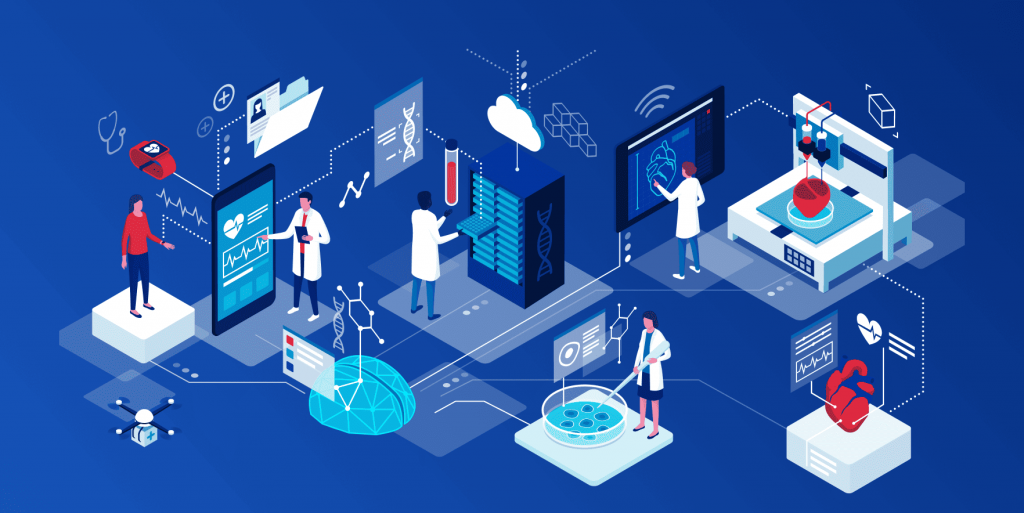
What is interoperability in healthcare?
Interoperability in healthcare refers to secure and coordinated use and transfer of electronic health data across various devices and systems. The main goal of interoperability is optimization of healthcare services and creation of a data-based and patient-centric environment. In other words, interoperability is the process of smooth data transfer across various departments in a standardized and secure manner so different users (including patients) can easily access it. Therefore, the importance of interoperability in healthcare cannot be underestimated.
We can list several elements that interoperability is based on:
- Standardization: covers data formats, communication protocols, and used terminology. Standardization is critical as it helps ensure that the data can be supported by various devices and that everyone understands the data correctly and uniformly. Also, standardized data does not require formatting, thus speeding up the process of its transfer and analysis.
- Robust infrastructure: to support the transfer of EHR (electronic health records), healthcare organizations need to have a reliable and secure digital infrastructure. It is especially important for organizations with legacy systems that need to be updated.
- Employee training: interoperability should be supported on all levels of a healthcare organization, which means that all employees should know how to work with new software systems and how to store and process the data in the required format. For that, organizations should provide sufficient training and education.
Four levels of interoperability in healthcare
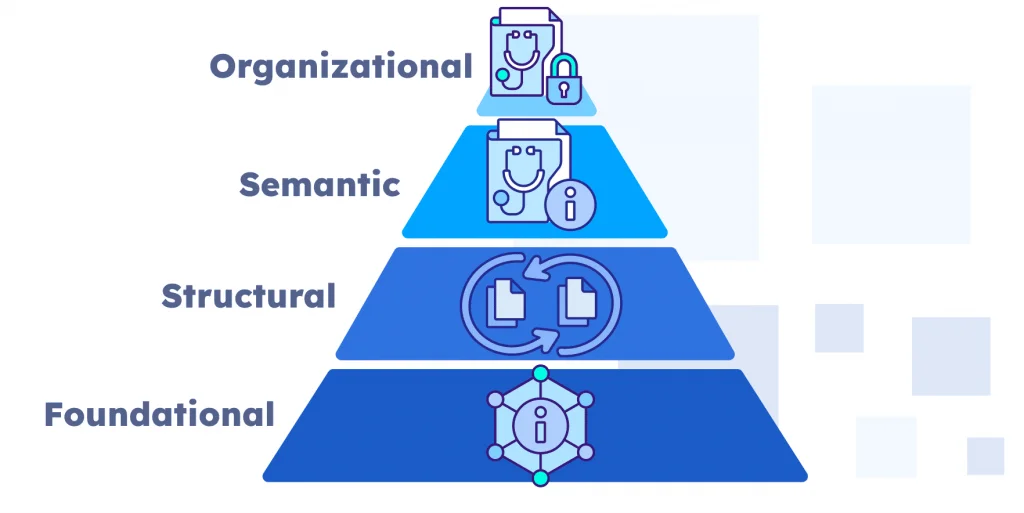
Since interoperability is quite a vague term and its adoption requires thorough preparation, the Healthcare Information and Management Systems Society (HIMSS) defined four main levels of interoperability. These levels cover the different stages of an organization’s maturity and readiness for interoperability. And while the first levels can already be achieved via an existing IT infrastructure of an average healthcare organization, other levels require more advanced technical investment and calculated approach.
Foundational
The foundational level of interoperability is also known as simple transport and refers to transferring the data from one system to another without any formatting. In this case, the receiving system doesn’t interpret the data but simply receives it. Further data processing though will most probably require manual effort.
If we talk about examples of interoperability in healthcare on the foundational level, think of sending a PDF file with the patient’s data from one system (say, a laboratory portal) to another (a nurse’s PC). In this example, the PC (a receiving system) receives the file and stores it – but is unable to automatically interpret the data and add it to the patient’s health record. For that, manual input by a nurse is required.
As you can see, this level is relatively simply and does not require any technical innovations or specialized approach. It is therefore available to almost any healthcare organization.
Structural
The structural interoperability can be called a level-up from the foundational one as it builds upon it. This level requires organizations to standardize their data to a specific format so that it can be interpreted by various systems and devices. For that, one needs to adopt such data standards as HL7 or FHIR (more on that below).
The structural level implies that the data is not only brought to a unified format but is also organized in a specific manner. In this way, all systems in use can easily recognize various data fields and process the data correspondingly. This approach significantly speeds up the whole data processing process and brings automation and clarity.
Semantic
Semantic interoperability refers to exchanging the data between two or more systems while the data comes in a common format and has a common meaning. In other words, different systems should be able to accurately interpret the data and the meaning of the data should remain the same across all systems and devices.
According to the AHIMA (American Health Information Management Association), semantic interoperability involves the use of specialized clinical terminologies (i.e., ICD, LOINC). This is needed to ensure that the data is both correctly interpreted and is used in a relevant manner.
Organizations that achieve semantic interoperability can seamlessly share the data between various departments and users, thus eliminating data duplication, enhancing better decision making, and cutting costs.
Organizational
Finally, the organizational interoperability implies the secure and seamless data exchange between organizations with different goals and regulations. That being said, all organizations involved should have strict data protection policies in place and should support interoperability on all levels, including the C-level management and key stakeholders. While some say that semantic interoperability is the highest level, others argue that it’s organizational interoperability that is the most complex and multifaceted set of processes and rules.
The benefits of interoperability in healthcare
After defining healthcare data interoperability, let’s move on to the biggest benefits of interoperability in healthcare:
Improved patient care
An electronic health record consists of the most various data, from lab results to X-ray scans. And if the smallest chunk of the data is lost or interpreted incorrectly, this can lead to the incorrect diagnoses and, as a result, insufficient patient care. And vice versa, the more acurrate and detailed the patient data is, the more personalized and data-driven the care will be.
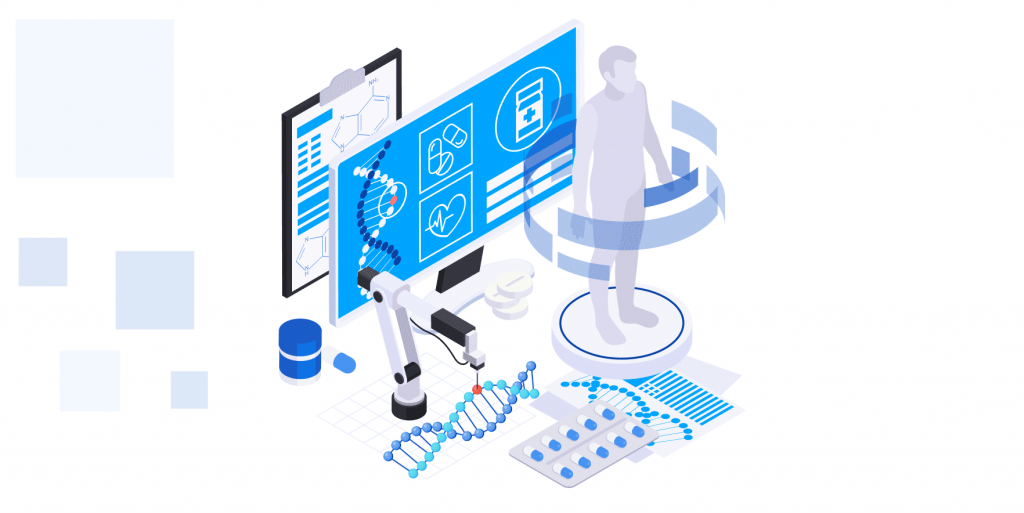
Healthcare interoperability solutions allow doctors to obtain a comprehensive view of one’s health record, quickly share the data between various departments, and minimize miscommunication (since all the data will be interpreted in a unified manner). This, in turn, leads to more accurate diagnoses, timely data processing, and elimination of errors during the data processing.
Increased efficiency
Related to the point above, another benefit of adopting interoperability is increased efficiency of operations and processes. Not only does interoperability speed up the delivery of information but it also contributes to more accurate data analysis, thus improving diagnostics and helping medical professionals access the needed information in a quicker and more automated way. In addition, interoperability contributes to more advanced research, enabling medical professionals to study not only present but past data in detail.
Reduced costs
Automation of data delivery can help a healthcare organization reduce its operational costs in several ways. Because the data can be seamlessly transferred between the departments, employees won’t have to repeat various scans or tests because the results will be instantly available to everyone. As well, interoperability minimizes manual labor (such as data input) thus also allowing organizations to save costs and let employees focus on more critical tasks.
Improved care coordination
Delivery of standardized information in a smooth and transparent manner greatly improves the overall care coordination. It helps medical professionals avoid unneccesary and duplicate processes, minimize miscommunication, and access needed information easily, thus granting employees more authority in decision making.
In a nutshell, interoperability enables more data-driven and patient-centric care while helping organizations cut costs and improve their processes. Now let’s dive in the terminology and talk about two things that you will hear most often when discussing interoperability: HIE and FHIR.
What is HIE?
HIE stands for health information exchange and refers to the digital transmission of health-related data across facilities and departments. It can be defined as a specialized network (a software product) that is based on interoperability and helps medical professionals exchange the data.
The main difference between HIE and healthcare data interoperability is that HIE is basically specialized software while interoperability is more of an approach towards data transmission and storage. However, it is important to understand what HIE stands for since this term is often used when talking about interoperability.
What is FHIR?
Another important term to know is FHIR aka Fast Healthcare Interoperability Resources. FHIR is a standard for healthcare data exchange that was published by HL7 (Health Level Seven) – a set of international standards for secure transfer of clinical data. While there are various standards for interoperability, FHIR is probably the most well-known one. Note that it can be used both independently and together with other standards.
The official HL7 website provides a comprehensive overview of all FHIR modules. The website explains how exactly organizations can adjust their processes for successful FHIR adoption and provides actionable recommendations on where to start.
The main goal of FHIR is to help healthcare organizations establish standardized data transfer processes so that two (or more) FHIR-based systems can seamlessly communicate. The FHIR standard consists of several components, with resources being the core ones. These are the “building blocks” behind FHIR and each resource contains standardized health information, relevant to the specific context of this resource. An example would be a patient resource that contains such data as the patient’s full name, address and phone number, and health condition. Since all patient resources should contain the same data formats, FHIR-based systems will be able to easily interpret and process these resources.
The FHIR standard also comes with informative implementation guides. As the name suggests, these guides provide all needed information for organizations to successfully adopt FHIR and include such resources as documentation, value sets, and examples. Finally, FHIR provides standardization for APIs, which also contributes to easier and more secure interaction and data transmission between different systems.
Core healthcare interoperability standards
Following the discussion of FHIR, it is important to mention other standards used to drive interoperability solutions in healthcare organizations. These healthcare interoperability standards fall under several categories, based on their purpose.
Terminology standards
Terminology standards help ensure that the data is correctly represented and interpreted by both the sender and the receiver. It means that the data should be organized in a unified manner and that organizations should use a well-structured vocabulary, terminology, and classification systems. Some of the most common terminology standards for the healthcare industry include:
- National Drug Code (NDC): published by the FDA (Food and Drug Administration), the NDC standard contains information about both finished and unfinished drug products and uses three-segment number codes as identifiers for each drug. These NDC numbers are updated on a daily basis on the official FDA website in the NDC directory.
- ICD-10 (International Classification of Diseases): a system by the World Health Organization (WHO) that classifies and codes diagnoses, symptoms, abnormalities, external causes for injuries, and more. The system is regularly revised and updated, currently being at the Tenth Revision.
- Current Procedural Terminology (CPT): a code set by the AMA (American Medical Association) for medical services and procedures. CPT coding is used to bill patients in a streamlined and organized manner due to standardization of available procedures.
Content standards
This one is a bit tricky as it relates directly to transport standards that we’ll discuss a bit later. Now, content standards basically define the content of a digital message that is exchanged between the systems. By content we mean the structure and organization of the message (or a document). Content standardization helps ensure that the receiving system interprets and processes the message correctly.
Remember we mentioned HL7? Health Level Seven is a comprehensive framework that includes various standards, including the content ones. HL7 was founded in 1987 and since then evolves continuously, offering clinicians around the world assistance with the adoption of interoperability. The content standards offered by HL7 are primary standards and they include:
- CDA® Release 2: a document markup standard for defining the structure and semantics of documents;
- HL7 Version 2.9.1 Messaging Standard: defines the standard and framework for messages exchanged between various systems.
Transport standards
In relation to content standards, transport standards are responsible for providing a unified manner of information exchange and transfer. They often address not only the format of transmitted messages but API standardization as well. Among the most common transport standards, in addition to FHIR, are:
- Digital Imaging and Communications in Medicine (DICOM): the standard is used for processing and transfer of medical imaging infomation across various systems;
- Direct StandardTM: provides a variety of standards aimed at secure and effective exchange of encrypted clinical data.
Security standards
Lastly, this category of standards is responsible for ensuring secure processing, storage, and transfer of the data and its protection against potential threats. Since clinical data is highly sensitive and contains lots of personal information, it is vital to safeguard it and ensure that your organization supports security on all levels.
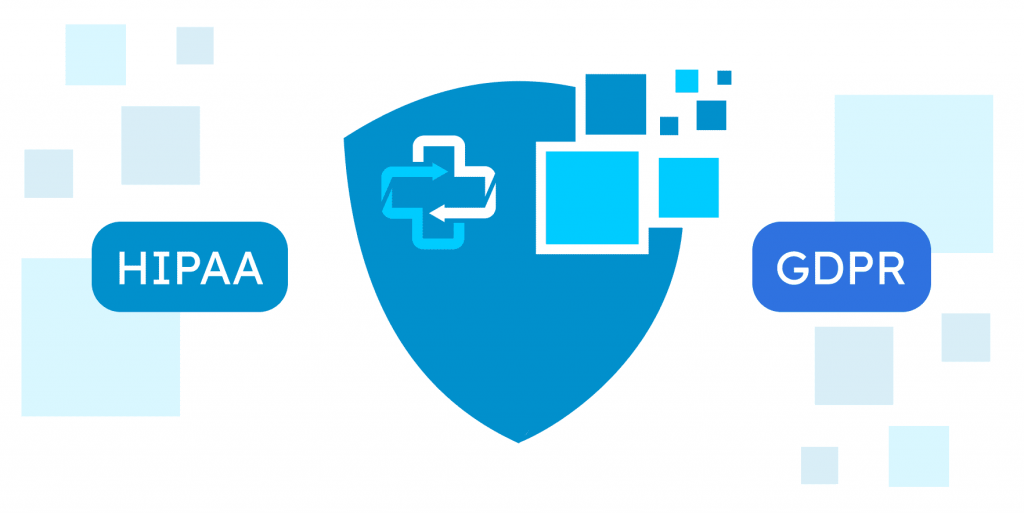
The most popular security standards in the healthcare industry are:
- HIPAA: the main goal of the Health Insurance Portability and Accountability Act known as HIPAA is to help patients protect their sensitive information and to prevent its disclosure without the patient’s consent.
- GDPR: the General Data Protection Regulation covers all companies that process and store clinical data and operate in the EU. The main goal of the regulation is to provide individuals control over their personal data and to ensure that organizations store and process this data in the correct manner.
Expert Opinion
Interoperability in healthcare is not just a technological trend, but a critical need for the development of the industry. With the rapid growth of medical data it is impossible to provide truly personalized and high-quality treatment without effective information exchange.
The key value of interoperability is improved interaction between different systems and organizations. Patients receive more accurate diagnoses, cases of duplication of tests and examinations are reduced and doctors can make informed decisions faster. However, in practice, the implementation of interoperable solutions faces a number of difficulties: outdated IT systems, lack of unified standards and even competition between medical institutions that are not always ready to share their data.
The use of standards such as FHIR and HL7 in combination with advanced technologies like AI, blockchain, cloud computing helps to solve these problems. However, it is important to understand that the technical part is only half the process. Interoperability requires changes not only in the infrastructure of the systems, but also in management processes and regulatory aspects.
In the long term, if the industry can overcome existing barriers, interoperability will become the foundation of the medical ecosystem of the future, ensuring efficient, safe and personalized healthcare.
Key challenges of adopting healthcare interoperability solutions
As you can see, interoperability focuses on security, transparency, and availability of the clinical data and brings significant advantages both to clinicians and patients. However, healthcare organizations face several challenges that prevent them from more rapid interoperability adoption. Here is the list of the biggest interoperability challenges in healthcare that the industry should focus on in order to make it more accessible.
Technical barriers
The first and most common challenge among healthcare organizations is outdated software, legacy systems, and lack of standardization. While digitization seems to become more and more widespread, many healthcare facilities still work with paper documents and fill them in by hand. And if a facility uses certain software, it is often outdated and cannot support massive data sets and modern technological solutions, required by the interoperability standards. In addition, this software may not be compatible with newer tech solutions and may not support needed document formats. So for such organizations, interoperability often requires modernization or even replacement of current software in use, which might be too expensive and time consuming. Also don’t forget that the introduction of new software requires employee training, which brings in extra costs.
In addition, healthcare organizations often lack standardized APIs, which leads to failed or poor communication between the systems.
Organizational issues
In addition to technical barriers to interoperability in healthcare mentioned above, many healthcare facilities also face organizational issues that prevent interoperability adoption. First, there is often obvious fragmentation when it comes to organizational policies and procedures. Lack of transparency, resistance and inability to share the data across departments, and lack of standardization – all this leads to the data scattered across the departments.
Second, some organizations may be hesitant to share the data due to the ongoing competition with other facilities or privacy concerns. The privacy issue can be resolved by paying more attention to the API security and the overall security of the whole data transfer process. As for the competition issue, seamless data sharing can be beneficial to all parties involved but this issue should be discussed individually.
As well, some organizations hesitate to adopt interoperability because it requires too much time, effort, and employee training. While interoperability indeed calls for the reorganization of the current processes, it is highly beneficial in the long run and can be implemented in small steps. We can therefore recommend organizations partner with reliable IT vendors and create a detailed strategy with clear deliverables and schedule. In this way, organizations will be able to adopt interoperability at a convenient pace.
Regulatory and legal issues
Regulatory issues are probbaly the most complex ones on the list of challenges of interoperability in healthcare as they require strict adherence to the regulatory standards and requirements. In addition to international regulations, a healthcare organization also has to consider local ones, which adds complexity to the compliance process.
Same as with technical issues, we recommend consulting with a knowledgeable IT vendor like SoftTeco who already has experience in creating secure and compliant software systems. During software development process, we ensure that all components interact with each other in a secure manner and adhere to the industry standards.
How emerging technologies drive interoperability
While the process of implementing interoperability is quite complex and consists of numerous steps, advanced technology makes it easier and more streamlined. Learn the main tech trends that will impact interoperability adoption in the near future.
Artificial intelligence
Artificial intelligence has become an integral part of many industries and healthcare is no exception. With all the opportunities it brings, AI has significantly contributed to automation and improved efficiency and accuracy of various clinical processes as well as to more patient-centric care. But how exactly does AI change interoperability?
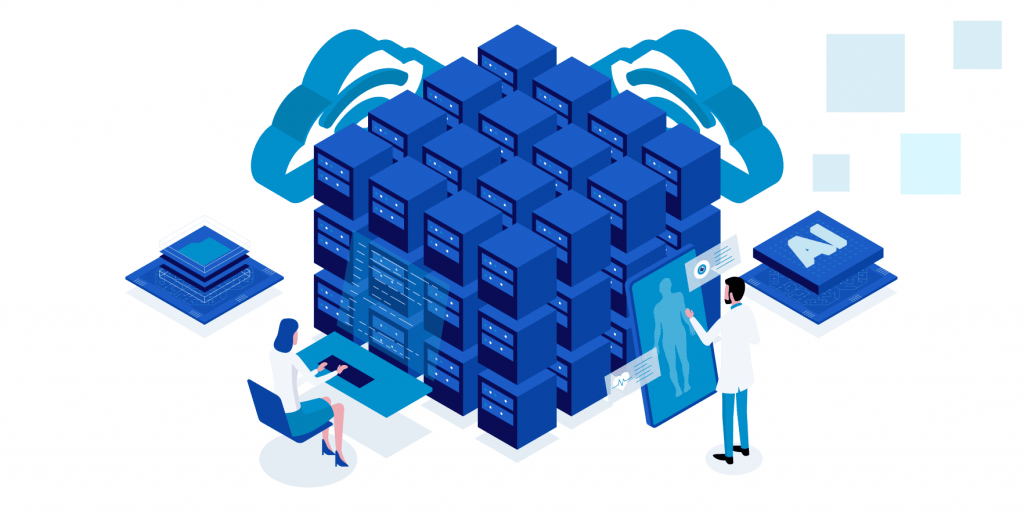

Here are the main AI use cases in terms of interoperability:
- Advanced data processing: since the clinical data usually comes in vast volumes and various formats, it requires highly powerful tools for effective analysis. AI can greatly help here not only by processing the data but also presenting it in a clear and understandable manner.
- Predictive analytics: this subset of AI is already in use in the healthcare industry as it helps predict the possibility of disease development, the potential severity of a disease, and even suggest a treatment plan. All this is relevant for interoperability as this data can be included in the patient’s EHR and considered by clinicians, thus contributing to more accurate diagnostics and decision-making.
- Personalized treatment: precise healthcare and personalized treatment are becoming more and more widespread in the industry and AI plays a big role in that. Due to the capabilities of this technology, medical professionals can provide more personalized treatment plans via effective and powerful data analysis and predictive analytics.
- Improved operations: in addition to improved patient care, AI can also cotribute to better operational efficiency. The technology can analyze your current workflows, suggest ways of optimization, and identify bottlenecks and areas for improvement.
Blockchain
Blockchain is steadily gaining more popularity among both organizations and users and there are several reasons for that. The biggest advantages of blockchain are its decentralized nature, 100% transparency, and a very high level of security. But how exactly do they impact interoperability? Let’s puzzle it out.
Blockchain is known for being decentralized – meaning it’s not controlled by a single entity and thus all records stored in the blockchain are controlled entirely by users. As for the transparency, users can check the validity of any record at any time, which contributes to increased trust. In addition, all blockchain records are secured by end-to-end encryption, thus minimizing the chance of fraud.
That being said, it comes as no surprise that blockchain is becoming a point of interest for healthcare organizations, willing to store and transfer the data in a secure and transparent manner.
Cloud computing
As already mentioned, many healthcare organizations still use outdated systems that are not capable of processing and storing the incoming data flow. This is where cloud computing comes into play and offers organizations scalability, automation, and efficiency.
A shift to the cloud provides organization access not only to unparalleled scalaibiltiy and security but also to an array of useful resources and tools (like the ones for data analysis). However, it is important to plan this transition in advance and preferably with a knowledgeable software provider of healthcare services to ensure that the process doesn’t disrupt the operation of your facility and that the data remains integral.
In conclusion
As healthcare organizations review and reorganize their current processes, the shift towards interoperability is inevitable. But how to improve interoperability in healthcare and how to make sure that your organization manages the generated data in a secure manner?
What is important to remember is that the adoption of interoperability in healthcare requires a well-calculated approach and should be done gradually. You can start with small steps and scale up gradually as your employees get used to updated processes and new tools. And if you have any questions left or need a detailed guidance on developing specialized software, SoftTeco’s experts will gladly provide you with all needed information. Drop us a note via an email and we will discuss how we can help you with interoperability implementation and modernization of your current systems!
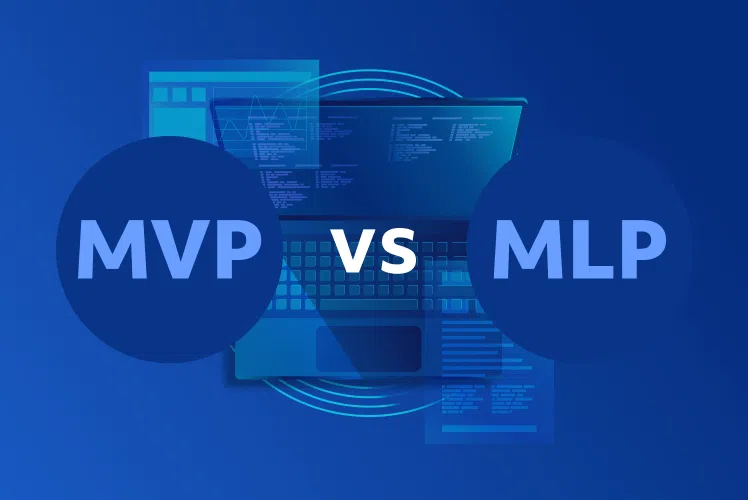

Comments